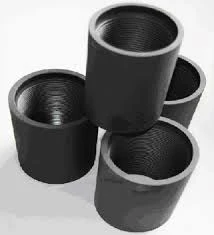- Afrikaans
- Albanian
- Amharic
- Arabic
- Armenian
- Azerbaijani
- Basque
- Belarusian
- Bengali
- Bosnian
- Bulgarian
- Catalan
- Cebuano
- Corsican
- Croatian
- Czech
- Danish
- Dutch
- English
- Esperanto
- Estonian
- Finnish
- French
- Frisian
- Galician
- Georgian
- German
- Greek
- Gujarati
- Haitian Creole
- hausa
- hawaiian
- Hebrew
- Hindi
- Miao
- Hungarian
- Icelandic
- igbo
- Indonesian
- irish
- Italian
- Japanese
- Javanese
- Kannada
- kazakh
- Khmer
- Rwandese
- Korean
- Kurdish
- Kyrgyz
- Lao
- Latin
- Latvian
- Lithuanian
- Luxembourgish
- Macedonian
- Malgashi
- Malay
- Malayalam
- Maltese
- Maori
- Marathi
- Mongolian
- Myanmar
- Nepali
- Norwegian
- Norwegian
- Occitan
- Pashto
- Persian
- Polish
- Portuguese
- Punjabi
- Romanian
- Russian
- Samoan
- Scottish Gaelic
- Serbian
- Sesotho
- Shona
- Sindhi
- Sinhala
- Slovak
- Slovenian
- Somali
- Spanish
- Sundanese
- Swahili
- Swedish
- Tagalog
- Tajik
- Tamil
- Tatar
- Telugu
- Thai
- Turkish
- Turkmen
- Ukrainian
- Urdu
- Uighur
- Uzbek
- Vietnamese
- Welsh
- Bantu
- Yiddish
- Yoruba
- Zulu
what are the differences between casing and tubing?
Differences Between Casing and Tubing in Oil and Gas Production
The oil and gas industry involves a complex network of equipment and processes aimed at efficiently extracting hydrocarbons from the earth. Among the essential components of this extraction process are casing and tubing, which play critical roles in the drilling and production of oil and gas wells. Understanding the differences between casing and tubing is fundamental for industry professionals, engineers, and those interested in oil and gas operations.
Definition and Purpose
Casing and tubing serve distinct purposes in the construction and operation of a well. Casing refers to the series of steel pipes that are installed in a drilled hole to provide structural integrity and prevent the collapse of the wellbore. It is also essential for sealing off water zones and protecting the surrounding formation from the well’s fluids. Casing helps to ensure that the well can safely contain the pressure from the hydrocarbons below and also provides a pathway for the fluids to be produced without compromising the integrity of the surrounding geological formations.
On the other hand, tubing is a smaller-diameter pipe that is inserted into the casing after drilling is completed. Its primary function is to transport the hydrocarbons from the producing zone to the surface. Tubing allows for the efficient flow of oil and gas, enabling production operations to occur safely and effectively. Unlike casing, tubing must be able to withstand the various pressures and temperatures associated with the production of hydrocarbons.
Material Composition
Both casing and tubing are primarily made from steel, which provides the necessary strength and durability required to withstand extreme conditions found underground. However, the specifications and grades of the steel used can vary. Casing pipes are thicker to withstand higher external pressures from surrounding rock as well as the internal pressures from the fluids they contain. This thicker composition can include various grades of steel, accommodating the specific requirements of the well environment.
In contrast, tubing is designed to handle internal pressure primarily, thus its wall thickness is usually less than that of casing. The selection of tubing material can be influenced by factors such as the type of hydrocarbons being produced, temperature, and the presence of corrosive elements in the fluids.
what are the differences between casing and tubing?

Installation and Lifecycle
The installation process for casing and tubing differs significantly. Casing is installed first during the drilling process. Once the required depth is reached, the casing pipes are placed into the wellbore and cemented in place to provide structural support. This step is critical as it locks the casing in place, preventing any movement or shifting that could occur over time.
Following the completion of the well and after the casing is securely installed, tubing is then introduced into the wellbore. Tubing can be removed and replaced more easily than casing, and it may require maintenance or replacement throughout the lifecycle of the well. This flexibility allows operators to adapt to changing production conditions or repair any issues that arise without the need for extensive intervention.
Regulatory and Safety Considerations
Both casing and tubing are subject to strict regulatory standards and safety protocols. Casing must comply with regulations intended to ensure that it sufficiently isolates potentially harmful substances and helps prevent environmental contamination. Tubing must also meet specific guidelines designed to ensure safe and efficient production operations.
The integrity of both casing and tubing is crucial for safe drilling and production processes. Failures in either of these components can lead to catastrophic events, including blowouts, leaks, and environmental damage, underscoring the importance of adhering to safety standards throughout the lifecycle of a well.
Conclusion
In summary, while both casing and tubing are pivotal to the oil and gas extraction process, they serve very different functions and possess unique characteristics. Casing provides structural integrity and isolation, while tubing facilitates the flow of hydrocarbons to the surface. Understanding the differences between these two components is essential for those involved in the drilling, production, and maintenance of oil and gas wells. By ensuring proper installation and maintenance of both casing and tubing, the industry can operate safely and efficiently, maximizing resource extraction while minimizing environmental impact.
-
Tubing Pup Joints: Essential Components for Oil and Gas OperationsNewsJul.10,2025
-
Pup Joints: Essential Components for Reliable Drilling OperationsNewsJul.10,2025
-
Pipe Couplings: Connecting Your World EfficientlyNewsJul.10,2025
-
Mastering Oilfield Operations with Quality Tubing and CasingNewsJul.10,2025
-
High-Quality Casing Couplings for Every NeedNewsJul.10,2025
-
Boost Your Drilling Efficiency with Premium Crossover Tools & Seating NipplesNewsJul.10,2025







